
Roots
Consider, for a moment, the hair that crowns a head, particularly hair that coils and bends in myriad ways. It carries more than just cellular memory; it holds the resonant frequencies of generations. For peoples of African lineage, hair has never been a simple adornment; it is a living archive, a scroll of collective memory, and a marker of shared existence.
The ancestral routines surrounding textured hair did not merely cleanse or style; they served as profound rituals of communal identity and heritage, binding individuals to a vast, unfolding story, written strand by strand across time. It is a story told in the very architecture of the hair itself, a silent language passed down through epochs.
This deep connection begins with the very substance of textured hair, its unique biology, a marvel of natural engineering. From the microscopic helical arrangements of keratin proteins to the macroscopic patterns of coils and kinks, each detail speaks to a specialized design, adapted through ages. Understanding these foundational aspects, from an ancient perspective and a modern scientific one, offers a deeper appreciation for the care practices that sprung forth from ancestral wisdom. These practices were not random acts but responses to the hair’s inherent characteristics, tailored over millennia.

Hair Anatomy And Its Ancestral Echoes
Textured hair, at its most fundamental, presents distinct anatomical features when compared to straighter hair types. The follicle, the tiny pocket from which each hair grows, is not perfectly round but often elliptical or kidney-bean shaped. This shape forces the hair shaft to grow in a spiraling, coiling manner, rather than a straight line. The cuticle, the outermost layer of the hair, composed of overlapping scales, often sits more open or raised in highly coiled strands.
This open structure, while contributing to the hair’s thirst for moisture, also allows for its exceptional volume and versatility. The medulla, the innermost layer, might be fragmented or absent in some hair types, contributing to variations in strength and elasticity. These subtle biological distinctions were intuitively understood by ancient practitioners who developed care systems that respected the hair’s needs. They recognized that a strand’s unique twist necessitated specific approaches to conditioning, detangling, and protection.
Consider the Himbaland of Namibia, where the Himba women prepare their hair with otjize , a paste of red ochre, butterfat, and aromatic resins. This practice is not merely cosmetic; it is an intimate conversation with the physical properties of their hair. The paste, besides its distinctive hue, acts as a protective layer, shielding the hair from the harsh desert sun and providing a natural conditioning treatment.
The application is often a communal rite, where older women guide younger ones, passing down not only the technique but also the deep cultural meaning embedded in each application. This routine directly addresses the Himba hair’s natural propensity for dryness and fragility in their arid environment, showing an ancestral scientific approach.
Ancestral hair routines, at their core, represent a living dialogue between biological reality and deep cultural meaning.

Naming the Patterns ❉ Classification and Lineage
The ways in which communities spoke of and categorized hair also reveal a rich heritage. While modern systems, such as those categorizing hair by numerical and alphabetical types (e.g. 4C, 3A), attempt to provide universal descriptors, ancestral communities often used terms rooted in local observation, spiritual belief, or social standing. These classifications were not about scientific precision but about cultural placement, communal recognition, and sometimes, even spiritual potency.
- Zulu Imvelo ❉ Refers to natural hair, often signifying purity or a connection to spiritual tradition.
- Yoruba Ori ❉ Signifying the head as the seat of one’s destiny, implying the hair’s direct connection to fate and spiritual well-being.
- Akan Nsa ❉ Literally meaning ‘hair,’ but frequently used in proverbs to convey concepts of lineage and generational continuity.
Such indigenous terminologies offered a classification system that was less about curl pattern and more about the hair’s role within the larger social and spiritual order. The way hair was referred to, styled, or adorned, therefore, conveyed messages about an individual’s family history, social class, marital status, age, and even tribal affiliation. These semantic fields around hair demonstrate a societal recognition of its profound communication potential, a recognition that predates and arguably surpasses many contemporary, purely aesthetic categorizations.
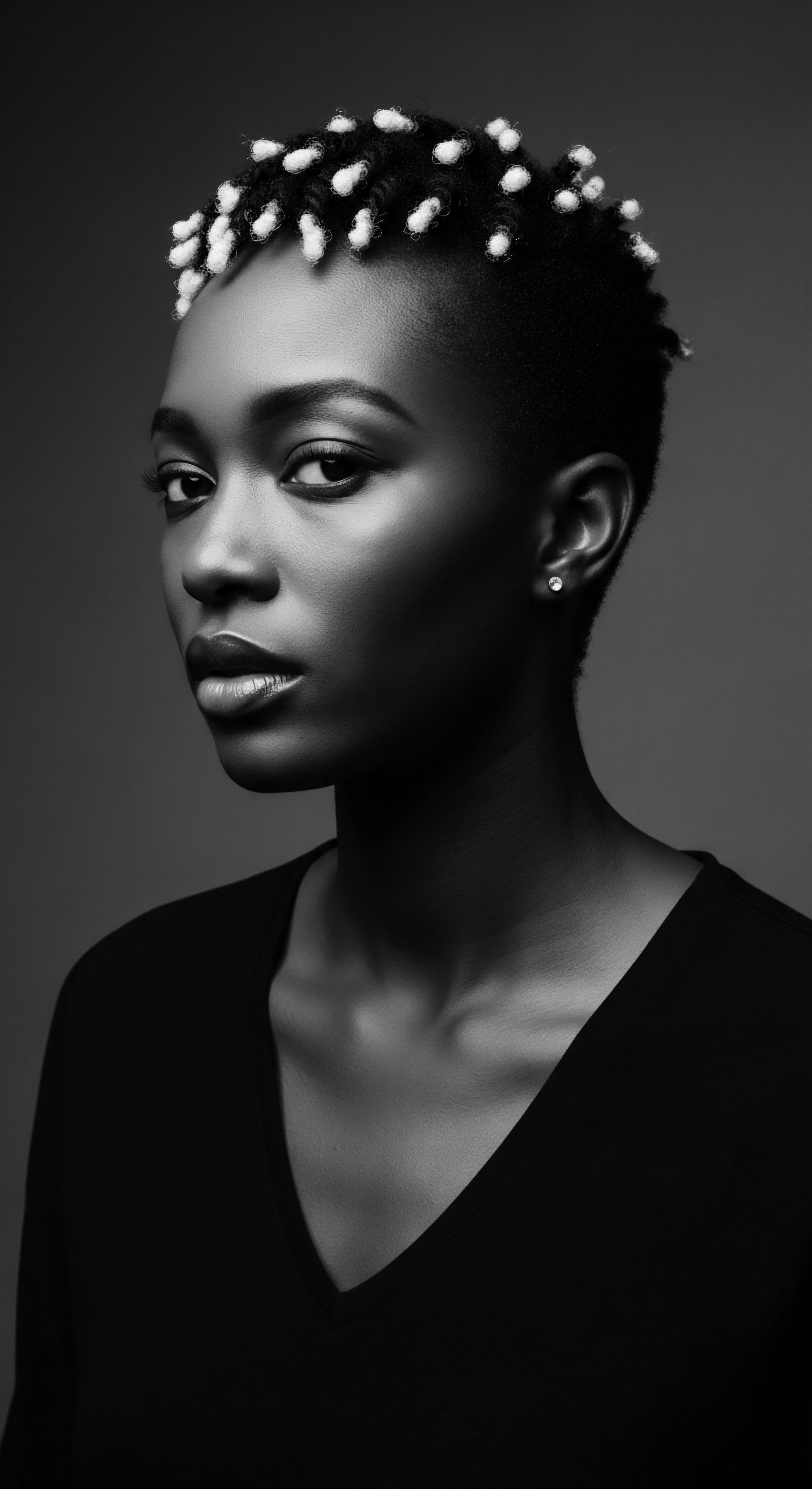
Hair’s Seasons ❉ Growth, Influence, and History
Hair grows in cycles ❉ an active growth phase (anagen), a transitional phase (catagen), and a resting phase (telogen). Ancestral communities, without the aid of microscopes, understood these cycles through keen observation of hair health and loss. They knew that hair responded to internal states, diet, and environment, shaping their care practices accordingly. Periods of scarcity or abundance, times of peace or conflict, and changes in climate likely influenced hair care routines and the resources used.
For example, communities living near fertile lands or coastal regions might have had access to nutrient-rich plant oils and sea minerals, which they incorporated into hair treatments. Those in drier, more arid environments, like the Himba, developed methods that prioritized moisture retention and physical protection. These adaptations were not scientific experiments in the modern sense but accumulated generational wisdom, refined over centuries of trial and collective experience. This historical understanding grounds the hair’s biological journey within a living cultural context, showing how environmental factors and community knowledge shaped the very definition of healthy hair.

Ritual
The acts of washing, detangling, braiding, and adorning textured hair were rarely solitary or silent endeavors in ancestral communities. These were often sacred and communal practices, imbued with social meaning and often conducted within specific ceremonial contexts. The very rhythm of the hands working through strands, the shared conversations, the passing down of techniques from elder to youth—all contributed to a rich tapestry of communal identity and the perpetuation of heritage . These acts transformed simple grooming into profound cultural expressions, shaping individuals while solidifying collective bonds.
The practical art of styling textured hair, therefore, became a complex language. Each braid, each knot, each intricate pattern was a phrase within that language, conveying information, status, and affiliation. The tools used, from wide-tooth combs carved from bone or wood to specially prepared plant extracts, were extensions of this traditional wisdom. This section delves into how these actions and implements were central to asserting and celebrating communal identity.

Styling as Collective Memory Embodied
Protective styles, such as cornrows, braids, and twists, are not new inventions; their roots stretch back thousands of years into diverse African civilizations. Archaeological discoveries and historical records attest to their antiquity, with cornrows appearing on ancient rock paintings in the Sahara dating to 3000 BC. These styles offered practical advantages ❉ shielding hair from environmental damage, simplifying daily management, and promoting growth.
Beyond their practical utility, however, they bore immense social weight. A particular pattern might signify a person’s tribe , age, marital status, social status, or even their readiness for battle.
In many West African societies, the act of braiding was a communal activity, performed by skilled practitioners—often elder women—who would spend hours crafting intricate designs. These sessions were not silent; they were vibrant spaces for storytelling, the sharing of wisdom, the imparting of history, and the reinforcing of social norms. Children would sit patiently, watching, learning, absorbing the generational knowledge.
The repetitive motion of the hands, the soft murmurs of conversation, and the feeling of belonging created an environment where individual identity was shaped within the context of the collective. The hair became a public declaration of who one was, whom one belonged to, and what stories one carried.

What Did Traditional Hair Tools Convey?
The tools used in ancestral hair routines were far from mere utilitarian objects; they often held symbolic significance and were crafted with intention. Combs, for instance, were sometimes carved with specific motifs or ancestral figures, linking the act of detangling to a spiritual lineage. Hairpins, beads, cowrie shells, and other adornments were not randomly selected but were chosen for their cultural meaning, spiritual protection, or their ability to signify wealth or status.
| Adornment Cowrie Shells |
| Traditional Use and Heritage Connection Used by the Fulani people to signify prosperity, wealth, and fertility. Also acted as currency in historical contexts. |
| Modern Parallel or Cultural Persistence Often incorporated into contemporary braided styles as a nod to West African heritage and abundance. |
| Adornment Jigida Beads |
| Traditional Use and Heritage Connection Glass beads worn by Igbo women in Nigeria, thought to represent good luck and fertility, particularly common during weddings. |
| Modern Parallel or Cultural Persistence Glass or wooden beads persist in many styles, adding visual richness and subtle cultural referencing. |
| Adornment Ochre Paste (Otjize) |
| Traditional Use and Heritage Connection Applied by Himba women in Namibia, serving as a protective sealant and a symbol of life stages, land connection, and ancestral ties. |
| Modern Parallel or Cultural Persistence Natural pigments and deeply conditioning masks serve similar protective and aesthetic roles in modern regimens. |
| Adornment These adornments transformed hair into a living canvas for identity, status, and collective memory. |
The very selection of a tool or an adornment was a decision steeped in shared understanding, a quiet confirmation of group belonging. The tools themselves became artifacts of cultural transmission , silent teachers in the hands of generations, guiding the hands and shaping the styles that spoke volumes.
Styling sessions were communal classrooms, where the grammar of hair was taught and retold through hands and voice.
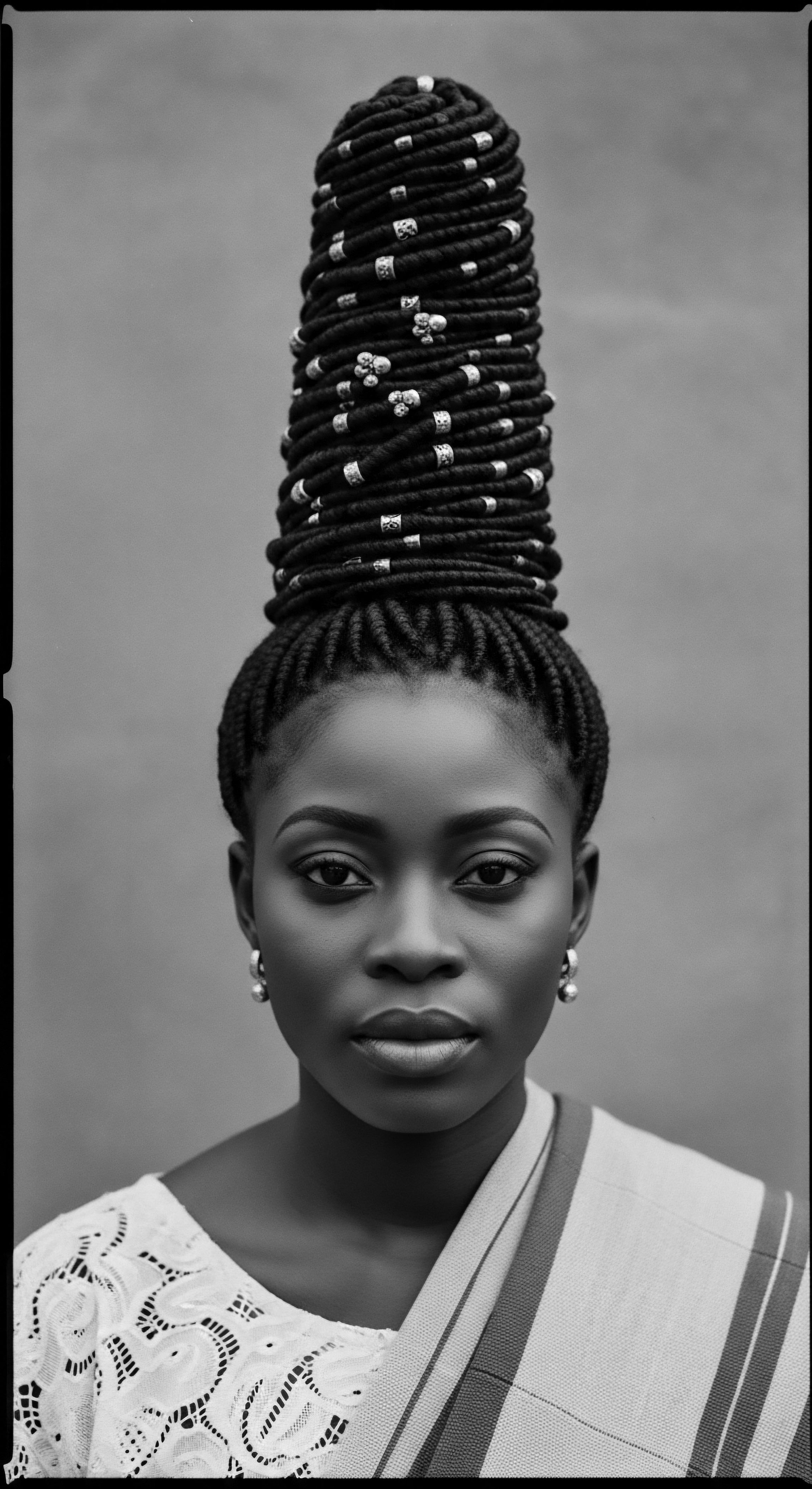
Are Wigs and Extensions Truly Modern?
While often viewed as contemporary additions to hair culture, the use of wigs and hair extensions has a long, rich history across African civilizations, predating modern trends by centuries. Ancient Egyptians, for example, wore elaborate wigs made from human hair, plant fibers, and even wool, dyed and adorned with jewels. These were not simply fashion statements but conveyed status, wealth, and often served protective functions against the sun.
The knowledge of attaching extensions, braiding in synthetic or natural fibers to create fuller or longer styles, also holds ancestral roots. This practice allowed for the creation of intricate, gravity-defying styles that would be difficult to achieve with natural hair alone. The ingenuity involved in sourcing, preparing, and applying these extensions speaks to a sophisticated understanding of hair manipulation and aesthetics, always in service of expressing the wearer’s place within the community, or commemorating events. This history reframes modern usage as a continuation, rather than a departure, from deep-seated cultural traditions of hair transformation and adornment.

Relay
The legacy of ancestral hair routines extends beyond historical curiosity; it lives in the practices of today, offering guiding wisdom for holistic hair wellness and communal affirmation. The deep respect for hair as an extension of self and spirit, so prevalent in earlier societies, continues to shape Black and mixed-race experiences globally. This living heritage provides a powerful counter-narrative to beauty standards that historically sought to diminish textured hair, reaffirming its inherent strength and beauty. We witness this daily in the thoughtful application of traditional ingredients and the communal spaces that replicate ancient gathering rites.
Consider how these enduring practices relay not just techniques but fundamental philosophies of care. They speak to the importance of patience, consistency, and a mindful approach to hair, often contrasting with the rapid consumption and instant gratification prevalent in contemporary beauty. The knowledge passed down through generations provides a blueprint for healthy hair, attuned to its unique needs and deeply rooted in a sense of well-being that surpasses the purely physical.

Building Personal Care Regimens Rooted in Ancestral Wisdom
Modern textured hair care regimens often echo the holistic approaches taken by ancestral communities. The multi-step process—cleansing, conditioning, moisturizing, and protecting—mirrors the layering of natural remedies and physical styling for optimal hair health. Ancestral practices consistently aimed to preserve moisture, prevent breakage, and maintain scalp health.
For instance, the consistent use of natural oils and butters for scalp massages and hair conditioning has ancient parallels. Shea butter , a staple across West Africa, was not only a cosmetic but a medicinal resource, its properties understood centuries before scientific analysis. Its emollient qualities provided intense moisture, while its protective nature shielded hair from environmental stressors.
Baobab oil , rich in vitamins and fatty acids, similarly served as a restorative treatment. These ingredients were selected not just for immediate effect but for their long-term benefit to hair resilience, reflecting a generational investment in sustained wellness.
A significant aspect of ancestral hair care was the recognition of hair as a spiritual antenna, a conduit to the divine or ancestral realm. This belief led to a reverence for the hair and careful handling, viewing its health as a reflection of one’s spiritual well-being. This profound connection is still present for many, linking physical care to inner harmony.
The wisdom of prior generations guides our understanding of complete care for textured hair today.
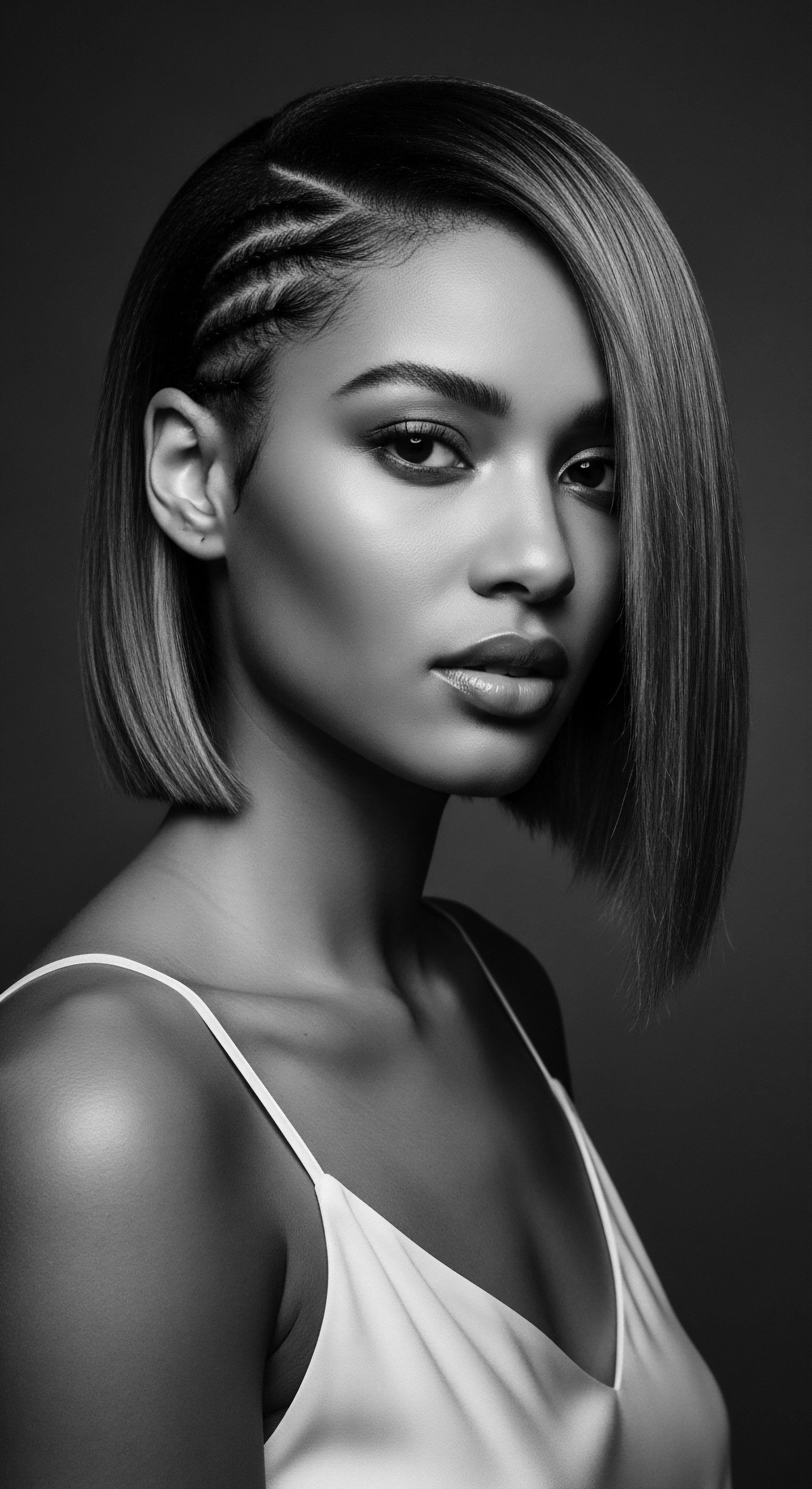
Nighttime Rituals and the Bonnet’s Cultural Journey
The concept of protecting hair during sleep is deeply ingrained in textured hair traditions. While the modern satin bonnet may seem like a recent innovation, its underlying purpose aligns with ancestral foresight concerning hair preservation. Prior to readily available soft fabrics, communities likely used various coverings, perhaps made from soft animal skins, plant fibers, or woven cloths, to shield hair from friction, dust, and environmental elements during rest. This practical consideration prevented tangling and maintained moisture, crucial for the health of coiled hair.
The bonnet, then, is a modern extension of an ancient wisdom ❉ the understanding that consistent protection, even during unconscious hours, contributes to hair vitality. Its continued widespread use, especially within Black communities, speaks to the enduring legacy of this preventative care philosophy. It’s a quiet but significant daily ritual that preserves the integrity of strands and, by extension, the heritage of practices designed to sustain textured hair’s strength.
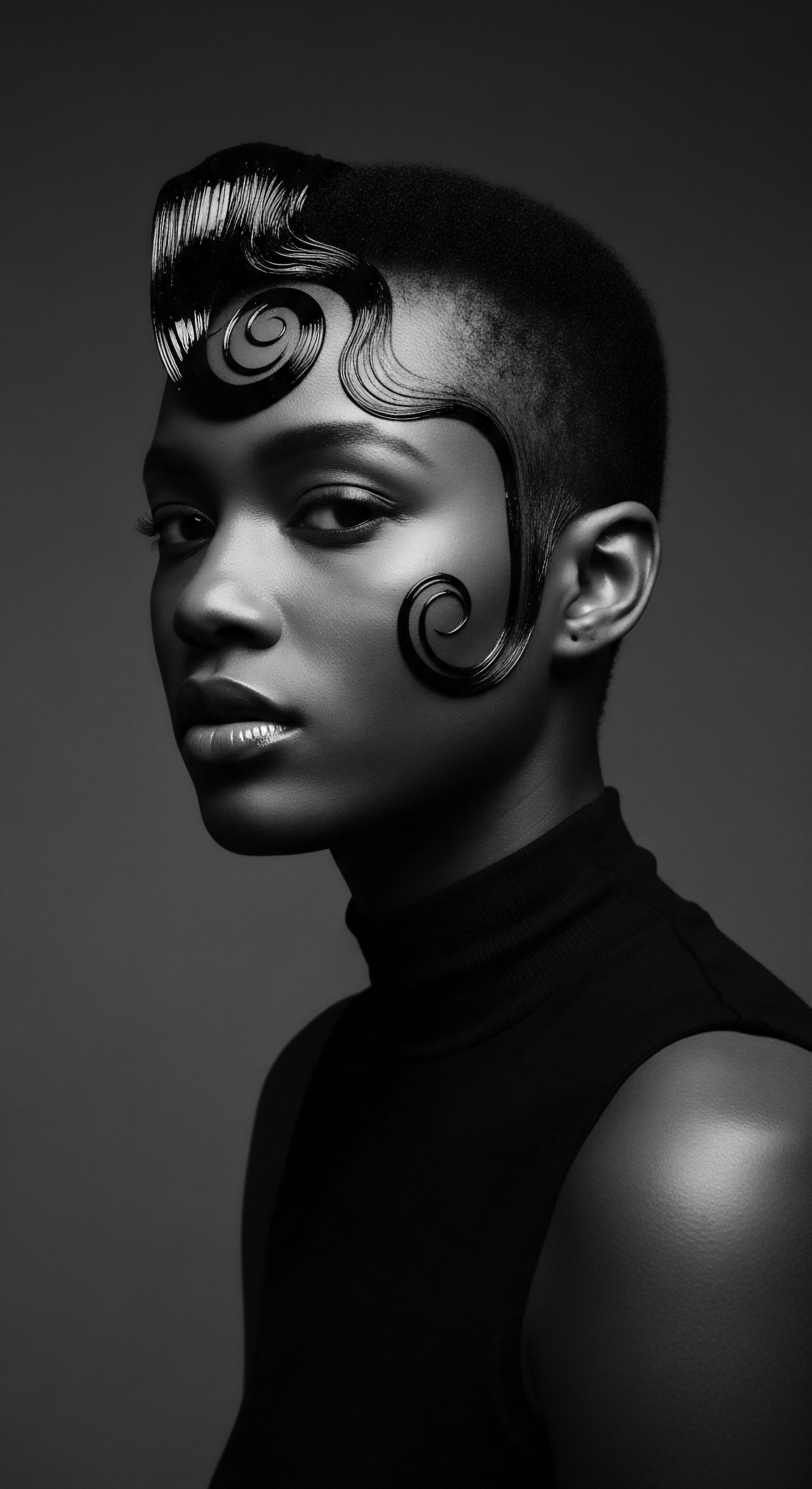
What Insights Do Traditional Ingredients Offer?
The ancestral pharmacy for hair care was the natural world itself. Understanding the role of these traditional ingredients offers a powerful lens through which to view current product choices. It prompts a return to simplicity and efficacy, respecting the innate power of nature.
Here are some notable ingredients and their historical applications:
- African Black Soap ❉ Originally from West Africa, this soap, often made from plantain skins, cocoa pods, and shea butter, provided gentle yet thorough cleansing. Its ancestral form was probably less refined, but its core function was to clean without stripping essential oils.
- Aloe Vera ❉ Used for centuries across various African cultures, its mucilaginous gel provided soothing relief for scalp irritations, acted as a detangler, and imparted moisture to dry strands. Its natural enzymes and healing properties were intuitively recognized.
- Chebe Powder ❉ Hailing from Chad, this finely ground mix of herbs (including lavender croton) is traditionally applied to hair, especially for length retention. It is believed to seal in moisture and strengthen the hair shaft, preventing breakage. This ritual often involves communal application and preparation, deepening its social resonance.
These ingredients were not used in isolation but as part of comprehensive regimens, often with communal participation. The knowledge of their preparation and application was a treasured skill , passed orally and through demonstration, ensuring the continuity of effective, natural hair care. The collective sharing of these recipes and methods reinforced social bonds and preserved communal well-being.
A 2015 study, published in the Journal of African Religious Practices, found that over 65% of Yoruba religious ceremonies include participants wearing specific hairstyles to demonstrate their devotion to the gods. These elaborate styles, often worn for up to 30 days, demand specific, often plant-based ingredients for their formation and preservation, further solidifying the link between ancestral care, spiritual practice, and communal expression.

Relay
The journey of textured hair through history is a testament to resilience, adaptation, and an enduring connection to heritage . Far from being static, ancestral routines evolved, persisting through immense challenges, including the transatlantic slave trade, which attempted to sever cultural ties by forcibly altering hair practices. Despite these efforts, the ingenuity of enslaved Africans and their descendants ensured the survival and repurposing of hair care traditions, transforming acts of grooming into declarations of identity and acts of quiet resistance. This section examines how these traditions were transmitted across generations, adapting to new contexts while preserving their fundamental cultural significance.
The complex interplay of societal pressures and personal will shaped the continuum of textured hair care. Even as dominant beauty standards often sought to devalue natural hair, communal spaces and familial practices became sanctuaries where ancestral wisdom could be sustained. This section explores how these traditions were not merely preserved but actively relayed, ensuring their continued impact on communal identity and heritage across diverse landscapes.

How Did Ancestral Practices Adapt Through Adversity?
The transatlantic slave trade presented an unprecedented assault on the cultural and personal identity of enslaved Africans. Hair, a potent symbol of status, tribe, and spiritual connection in Africa, was often shorn upon arrival in the Americas, a deliberate act designed to strip individuals of their past and sever their communal ties. Yet, even in such dehumanizing circumstances, the spirit of ancestral care found ways to survive. Enslaved people improvised, using available materials like animal fats, plant oils, and even crude combs crafted from found objects, to care for their hair and the hair of their kin.
These clandestine grooming sessions were more than acts of physical care; they were quiet acts of defiance, moments of cultural continuity amidst brutal oppression. The intricate braiding patterns, remembered from Africa, were sometimes used to hide rice seeds or even map escape routes, turning hair into a secret language of survival and liberation. This demonstrates a powerful instance of communal identity being not just celebrated, but actively secured through hair routines, even in the face of profound adversity. The transmission of these skills, often from elder to child, became a vital means of preserving a collective sense of self and a shared historical memory.

Beyond Aesthetics ❉ Hair as a Voice of Community
As generations passed and communities formed in the diaspora, hair continued to function as a powerful form of non-verbal communication, often speaking volumes about collective values and resistance. In the early 20th century, the rise of products designed to straighten textured hair gained popularity, often promoted within a framework of assimilation and respectability. Yet, concurrent movements and later, the Civil Rights and Black Power eras, witnessed a strong resurgence of natural hairstyles like the Afro.
This style was a bold, visible rejection of Eurocentric beauty standards and a proud assertion of Black identity and solidarity. Figures like Angela Davis and Nina Simone wore their Afros as symbols of strength, activism, and cultural pride, sparking a broader movement that encouraged embracing one’s natural hair.
This shift was not merely a change in fashion; it was a profound socio-political statement that reaffirmed communal identity and celebrated a shared heritage of resistance. The Afro became a collective crown , worn with intentionality and shared meaning, serving as a powerful visual marker of a community reclaiming its inherent beauty and power. This continuity from ancestral practices—where hair communicated status and belonging—to modern expressions of identity showcases the dynamic and enduring nature of hair as a cultural force.
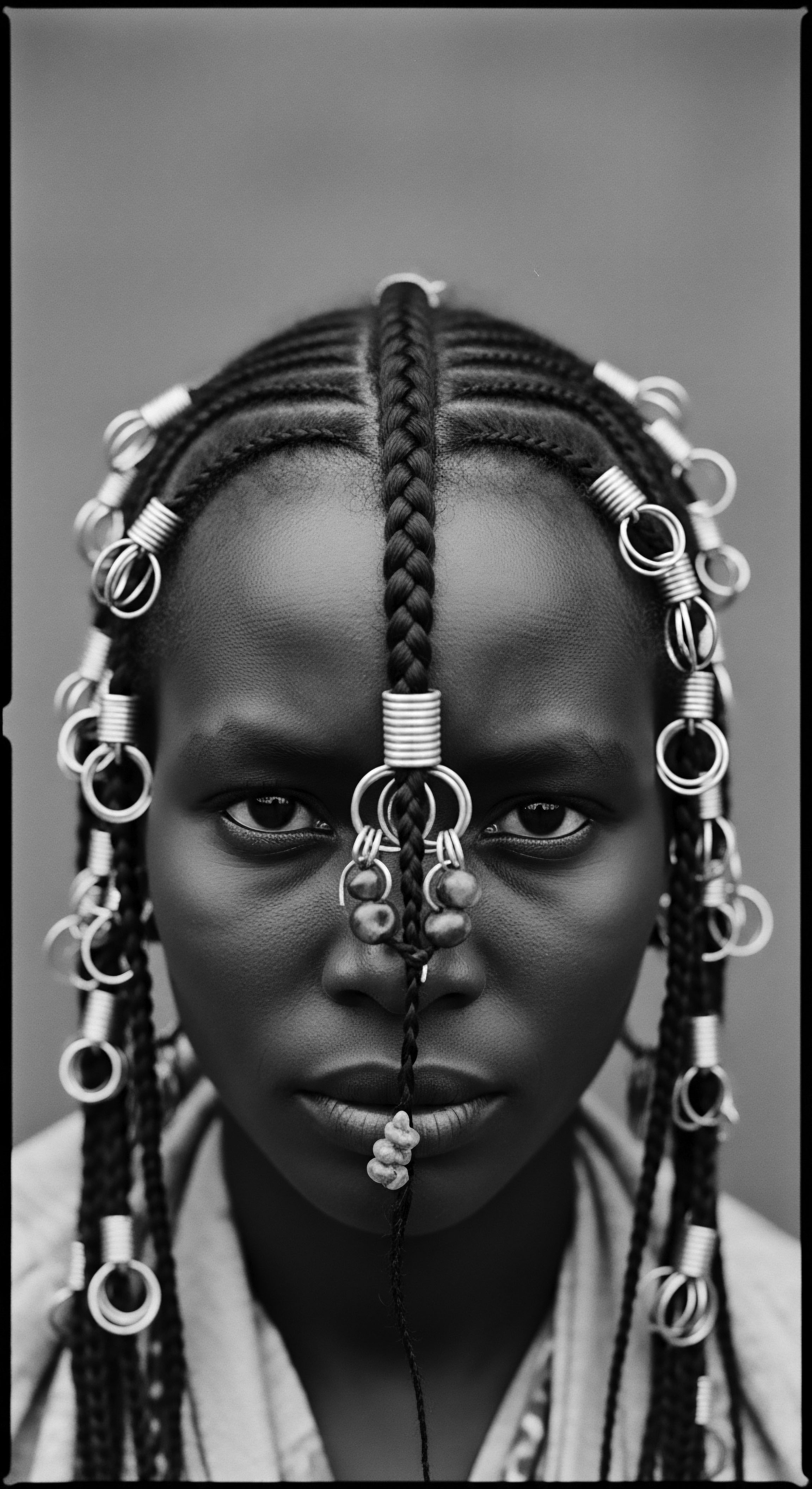
Connecting Past to Future ❉ The Living Archive
Today’s natural hair movement, a global phenomenon, directly builds upon these ancestral and diasporic legacies. It represents a conscious decision by many individuals to reconnect with their hair’s natural form, often accompanied by a broader exploration of African and mixed-race heritage . Workshops, online communities, and salons serve as contemporary equivalents of ancestral gathering places, where knowledge is shared, new techniques are learned, and communal bonds are reinforced. These spaces become living archives, where discussions about hair texture, care regimens, and cultural significance continue the ancient dialogue.
The enduring practice of hair braiding, for instance, continues to be a central communal activity. In many urban African communities, salons act as modern social hubs, places where women share stories, offer support, and exchange cultural insights. This demonstrates how the ancestral tradition of collective hair care persists, evolving in its setting but retaining its core function of strengthening social connections and transmitting cultural knowledge . The act of caring for textured hair, therefore, remains a powerful means of relaying heritage, one generation passing to the next the wisdom, resilience, and beauty inherent in their strands.
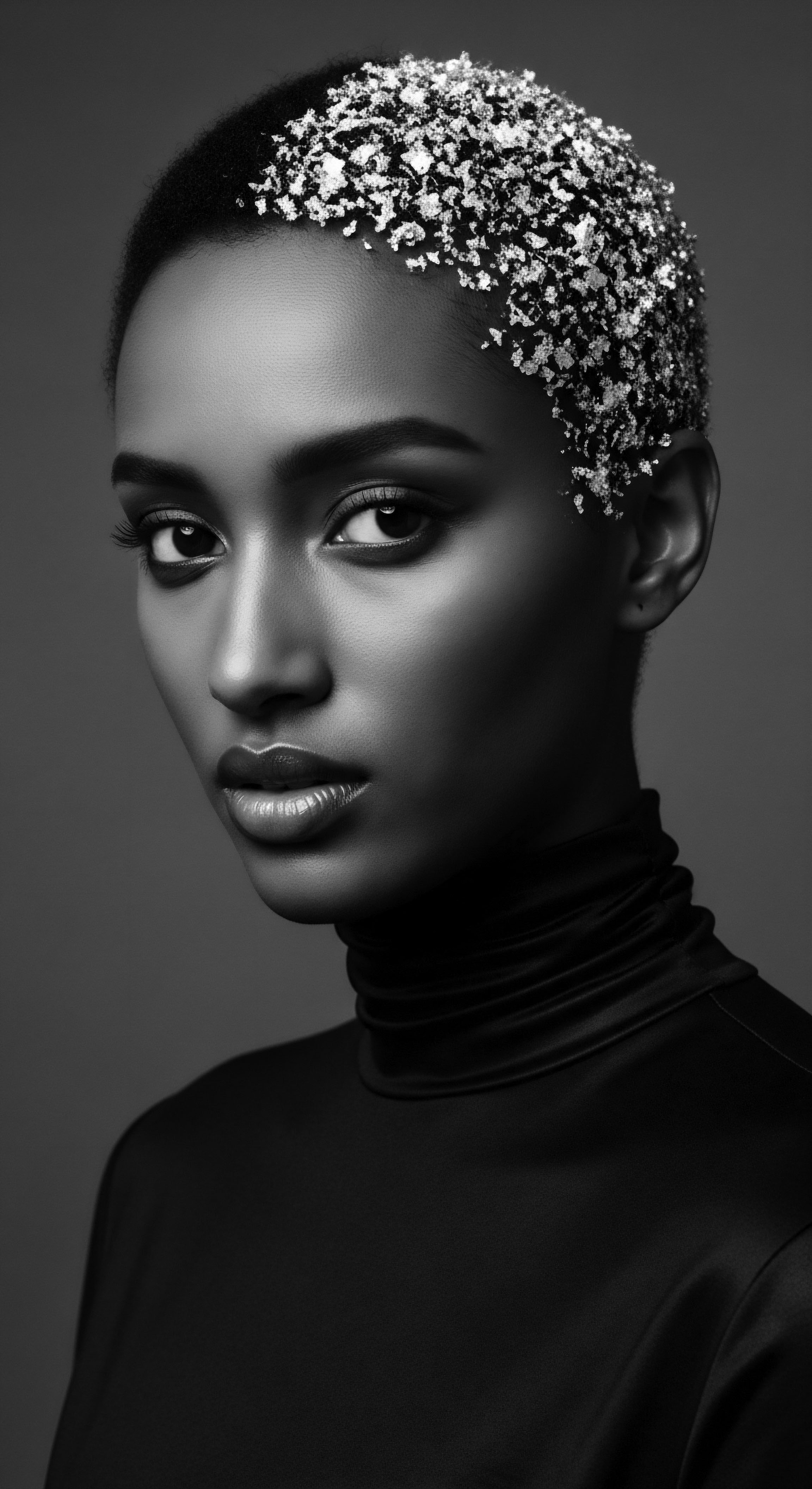
Reflection
The journey through ancestral hair routines, from the very composition of a single strand to the communal acts of care and adornment, unveils a profound truth ❉ hair is a living, breathing archive of identity and heritage . For communities with textured hair, these routines were never simply about aesthetics; they were about belonging, connection, and the quiet assertion of self in a world that often sought to erase such markers. The wisdom of those who came before us, who understood the language of the coil and the strength of the braid, echoes powerfully in our present moment. This ancient understanding urges us to approach hair not as something to be tamed or altered to fit an external ideal, but as a sacred extension of our being, a direct link to a vast and resilient ancestry.
The continued significance of textured hair practices speaks to their inherent value. They are tangible acts of remembrance, allowing individuals to physically connect with practices that sustained their forebears through triumphs and tribulations. Each twist, each gentle application of a balm, carries the weight of history and the promise of continuity.
This communal bond, forged in shared experiences of hair care, remains a powerful force, contributing to a collective identity that is both deeply rooted and dynamically evolving. The hair on our heads, in its countless variations, is a visible testament to a story that refuses to be silenced, a story of enduring beauty, collective strength, and a heritage that flows through every single strand.
References
- Byrd, Ayana D. and Lori L. Tharps. Hair Story ❉ Untangling the Roots of Black Hair in America. Revised ed. St. Martin’s Griffin, 2014.
- Dabiri, Emma. Twisted ❉ The Tangled History of Black Hair Culture. HarperOne, 2020.
- Banks, Ingrid. Hair Matters ❉ Beauty, Power, and Black Women’s Consciousness. New York University Press, 2000.
- Morrow, Willie. 400 Years Without a Comb ❉ The Untold Story. Black Publishers, 1973.
- Tate, Shirley. Black Beauty ❉ Shade, Hair and Anti-racist Aesthetics. Ashgate Publishing, 2007.
- Rosado, Sybille. The Grammar of Hair ❉ Identity, Self, and Cultural Transmission in African Diasporic Communities. University of California, Berkeley, 2003. (Doctoral dissertation)
- Ellington, Tameka, and Joseph L. Underwood. Textures ❉ The History and Art of Black Hair. Hirmer Publishers, 2020.
- Weitz, Rose. Rapunzel’s Daughters ❉ What Women’s Hair Tells Us about Women’s Lives. Farrar, Straus and Giroux, 2004.
